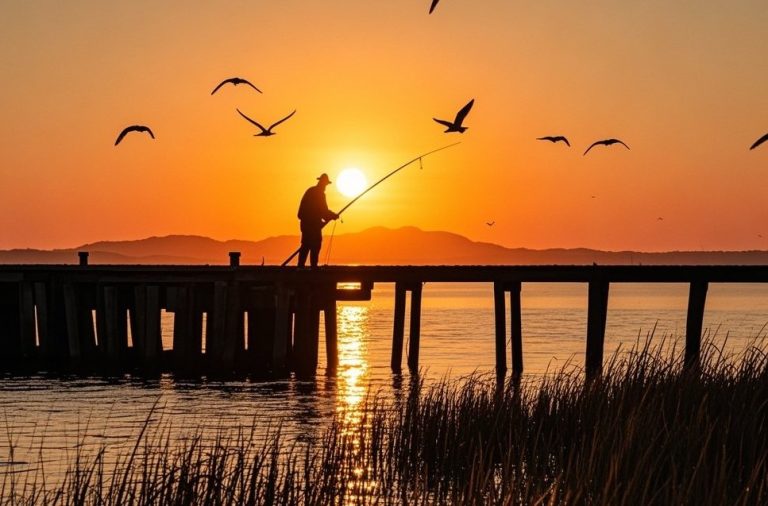One quirky habit makes them glow brighter than flamingos…
When the tide softens and the mangroves shimmer gold, Sanibel welcomes back its rose-colored guests the roseate spoonbills. With feathers so pink they look hand-painted, these elegant birds add a dreamlike charm to the island’s lagoons each winter. But behind their graceful flight lies a world of little secrets, quirks, colors, and habits that even seasoned birdwatchers miss. Today, we’re uncovering five of them part science, part folklore, and entirely Sanibel.
Secret #1 — Their Color Comes From the Menu, Not Magic
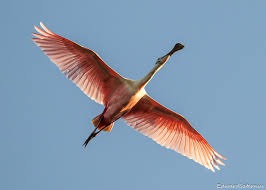
The first thing everyone wonders: why are they pink?
Turns out, it’s all about dinner. Spoonbills feed on tiny crustaceans like shrimp and other invertebrates rich in carotenoid pigments, the same compounds that give flamingos their rosy hue. But here’s the twist: Sanibel’s shallow lagoons create a buffet of pigment-packed meals that actually make our spoonbills glow more intensely than many found elsewhere.
If you ever notice one with slightly brighter feathers, that bird has been feasting in the right tide pools.
Fun fact list:
- 🦐 Shrimp → high carotenoid diet → pinker feathers
- 🌊 Sanibel’s estuaries hold more crustaceans per square foot than most Gulf islands
- 🌞 Direct sunlight deepens pigment reflection, especially during the golden hour
🌴 Secret #2 — They’re Surprisingly Social (and a Little Picky)
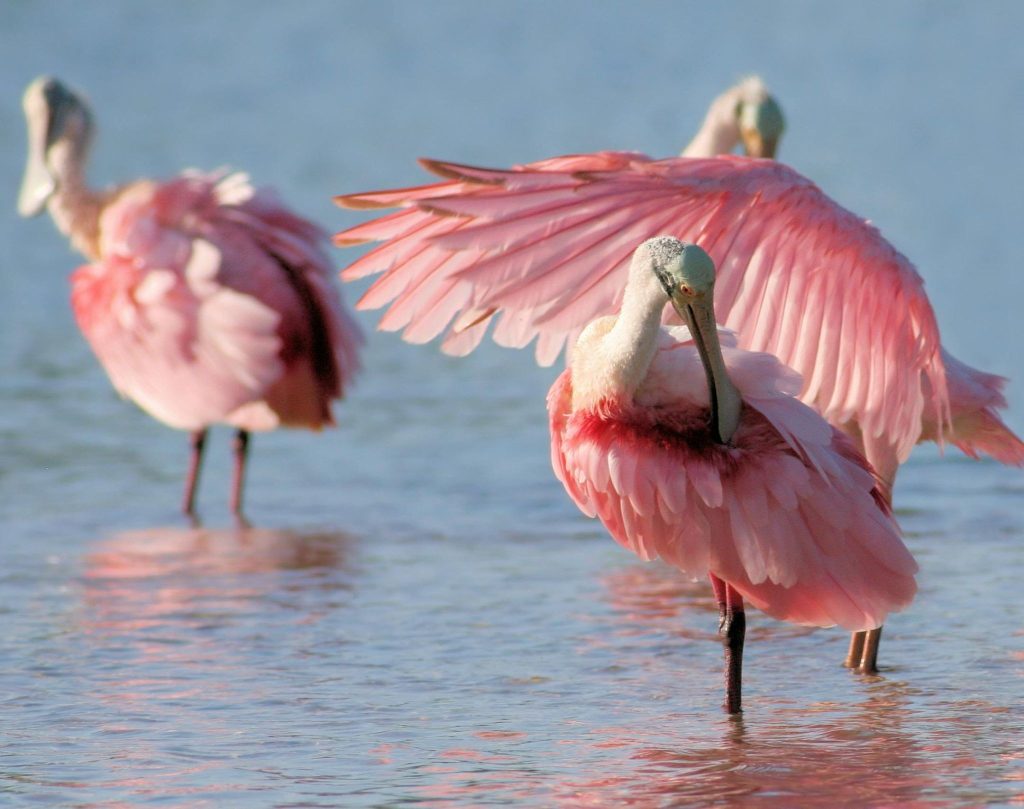
Despite their serene look, spoonbills are selective about who they hang out with. They flock with egrets and ibises but keep a clear pecking order quite literally. Males guard the best feeding patches, while females often choose mates based on dance displays involving synchronized bill-swinging.
Watch closely and you’ll notice tiny dramas unfold in the shallows graceful, but full of character.
Social secrets:
- 💃 Courtship involves a “spoon dance” side-by-side bill sweeping in circles
- 🪺 They nest in colonies but space out nests precisely three feet apart
- 🕊️ Sometimes, they join mixed flocks to chase fish disturbed by other birds’ movements
🌤 Secret #3 — Sanibel’s Light Changes Their Color (and Mood)
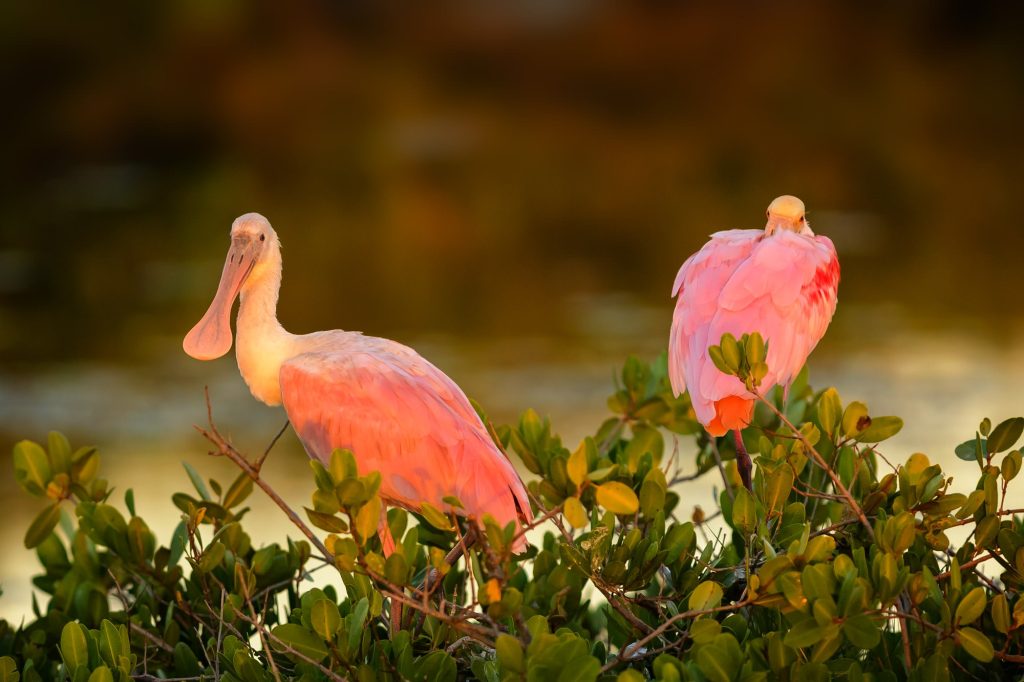
One of the most fascinating “secrets” is how Sanibel’s atmosphere makes spoonbills appear even more vibrant. The island’s clean air and high humidity scatter sunlight differently, enhancing pink hues at sunrise and sunset. Wildlife photographers swear that no two photos look the same even if shot from the same spot. Locals even joke that spoonbills know when to pose for tourists because they seem to appear just as the light hits perfect amber.
Lighting curiosities:
- 🌅 Morning mist refracts sunlight, intensifying pink tones
- 🌇 Evening reflections from mangroves add a golden tint to feathers
- 📸 Their plumage changes subtly throughout the day due to angle and moisture
💗 Secret #4 — They Have a Sense of “Home” (and Always Come Back)
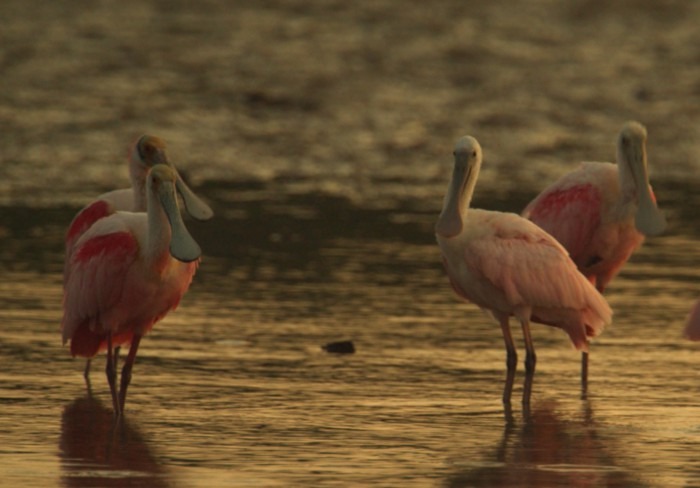
For all their wandering, roseate spoonbills are loyal travelers. Many tagged birds return to the same mangrove roosts on Sanibel year after year even after storms. Scientists believe they navigate using landmarks, wind cues, and magnetic fields. Some locals say the same families of spoonbills return to the same lagoons every winter, like snowbirds with wings.
Homecoming habits:
- 🧭 They migrate along Gulf Coast wetlands between Texas and Florida
- 🔁 60% of banded birds return to the same roost within 10 miles
- 🪶 After Hurricane Ian, sightings resumed in almost all their usual Sanibel spots
🌿 Secret #5 — Their Feeding Style Is a Dance of Precision

Watch closely, and you’ll see that spoonbills don’t peck or dive, they sweep. Their long, spatula-shaped bills move side to side in shallow water, snapping shut the instant they sense a fish, snail, or shrimp. It’s slow, deliberate, and mesmerizing. The motion stirs up sediment that attracts other species, creating mini feeding parties across the flats.
Feeding facts:
- 👅 Spoonbills’ bills have vibration sensors they can “feel” prey even in murky water
- 🌀 The sweeping creates ripples that bring food closer
- 🐟 They eat up to 9 ounces of food per hour during active feeding
🌸 Conclusion — The Pink Spirit of Sanibel
There’s something about the roseate spoonbill that captures Sanibel’s essence: peaceful yet alive, gentle but full of surprises. Whether you spot one skimming across a lagoon or framed in the sunset’s blush, remember: you’re seeing one of nature’s quiet masterpieces. The next time you’re on West Gulf Drive or Tarpon Bay, look for that flicker of pink in the shallows, it might just be one of Sanibel’s returning friends, glowing a little brighter than before.
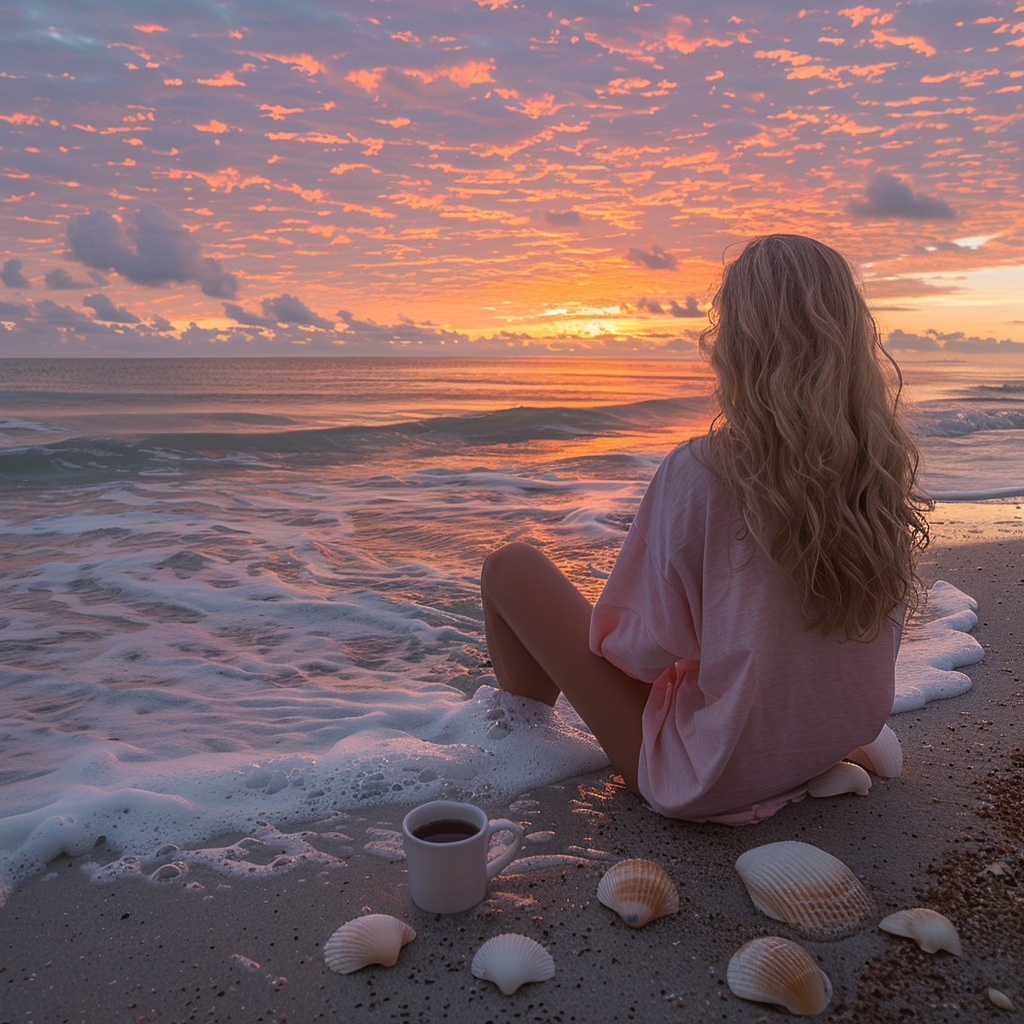
I’m Ayla Wolesky, and I’ve spent years exploring every corner of Sanibel Island. From its pristine beaches to the hidden gems only locals know about, I’m passionate about sharing everything this beautiful island has to offer. Whether it’s the best spots for shelling, the wildlife that makes Sanibel so special, or where to enjoy a perfect sunset, I’ve got you covered. My goal is to provide insider tips and up-to-date information that will help you experience Sanibel Island like never before.





